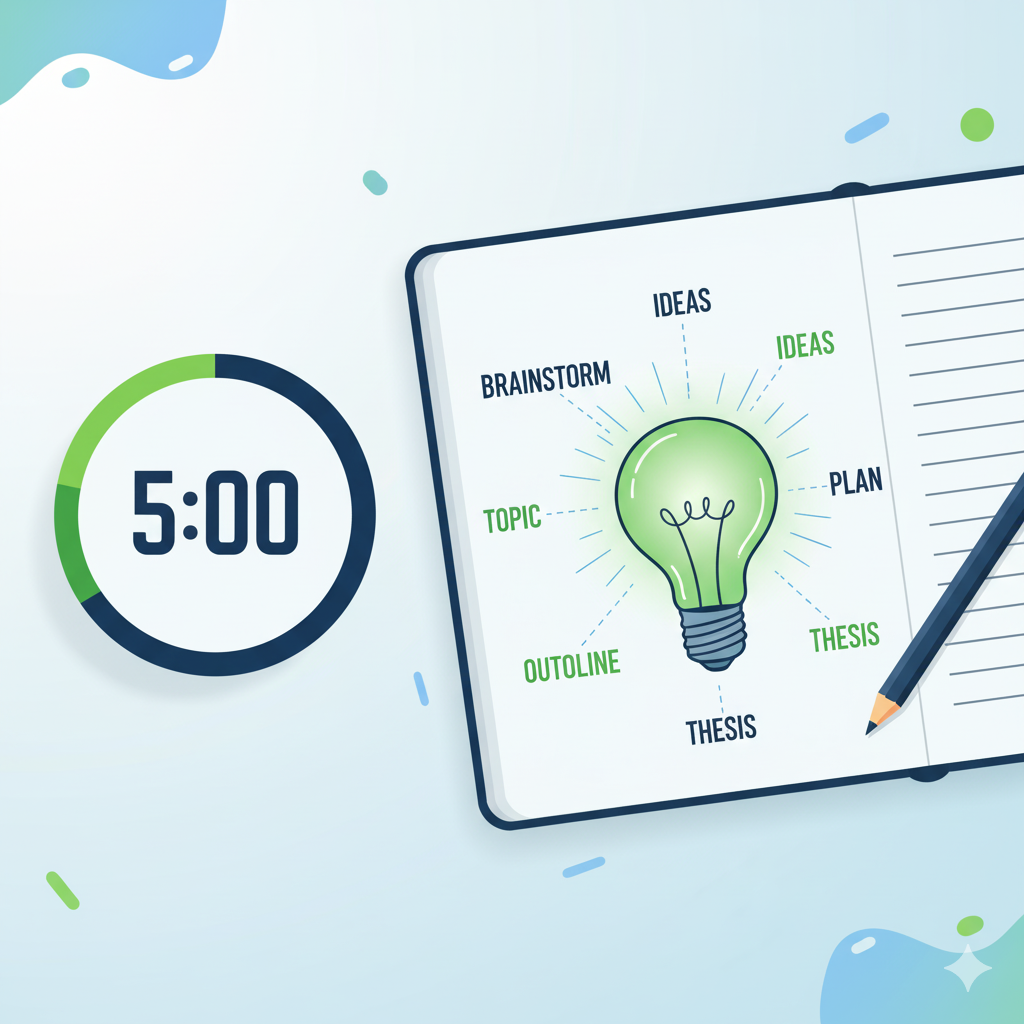
Introduction:
The clock is ticking. You read the IELTS essay question and your mind goes blank. This is a common nightmare, but it’s completely avoidable. The secret isn’t knowing everything; it’s knowing how to think. This guide will give you a structured system to generate compelling ideas and examples for any topic in just five minutes.
Why You MUST Brainstorm:
Planning for 5 minutes saves you 10 minutes of rambling. It ensures your essay is relevant, well-structured, and fully answers the question. It’s the single best way to improve your Task Response score.
The 5-Minute Brainstorming Process:
Minute 0-1: DECODE THE QUESTION.
- Action: Read the question twice. Underline the key words and identify the question type (e.g., Opinion, Discussion, Problem/Solution).
- Why: You must answer the exact question asked. A “discuss both views” essay requires different ideas than an “agree/disagree” essay.
Minutes 1-4: GENERATE IDEAS (Choose ONE Technique).
Technique 1: The PPPP Method (People, Public, Planet, Personal)
A fantastic framework for almost any topic. Ask yourself: How does this issue affect…?
- People (Individuals): Health, happiness, finances, freedom, skills, privacy.
- Public (Society/Government): Economy, infrastructure, law, education, crime.
- Planet (Environment): Pollution, climate, animals, sustainability, resources.
- Personal (You): “In my country,” “From my experience…” (use sparingly but effectively).
- Example Question:“Is a university education the best path to a successful career?”
- People: Debt from tuition fees, stress, specific skills learned.
- Public: Creates a skilled workforce, but might lack tradespeople (plumbers, electricians).
- Planet: (Less relevant here, so skip it).
- Personal: “In my country, many IT entrepreneurs are self-taught without degrees.”
Technique 2: The “Why?” Chain
Keep asking “Why?” to dig deeper into your initial thoughts.
- Question:“Why are cities becoming more polluted?”
- First answer: More cars.
- Why? Because public transport is often unreliable.
- Why? Because government investment is low.
- Why? Because political priorities lie elsewhere.
- Now you have a deep cause: Lack of political will to fund green infrastructure.
Technique 3: The “For and Against” T-Chart
Perfect for Opinion and Discussion essays. Draw a line down the middle of your paper.
- Left Side (Arguments FOR): List 2-3 reasons why someone would agree with the statement.
- Right Side (Arguments AGAINST): List 2-3 reasons why someone would disagree.
- Your Job: Choose the side with the strongest arguments for your thesis.
Minute 4-5: STRUCTURE AND CHOOSE.
- Action: Look at your brainstormed ideas. Choose the 2-3 strongest, most relevant points. Number them 1 and 2. This is the outline for your two body paragraphs.
- Crucial Step: Jot down one specific example for each main point. This prevents you from forgetting it later.
Practice Task:
- Question: “Many people prefer to rent their home rather than buy it. What are the advantages and disadvantages of renting?”
- Your Turn: Set a 5-minute timer and use the PPPP Method to brainstorm ideas. Do it now!
Conclusion:
Brainstorming is a skill. Practice it with 10 different essay questions before your test. You’ll be amazed at how quickly you can go from a blank page to a clear, confident plan, ready to write a Band 7+ essay.
